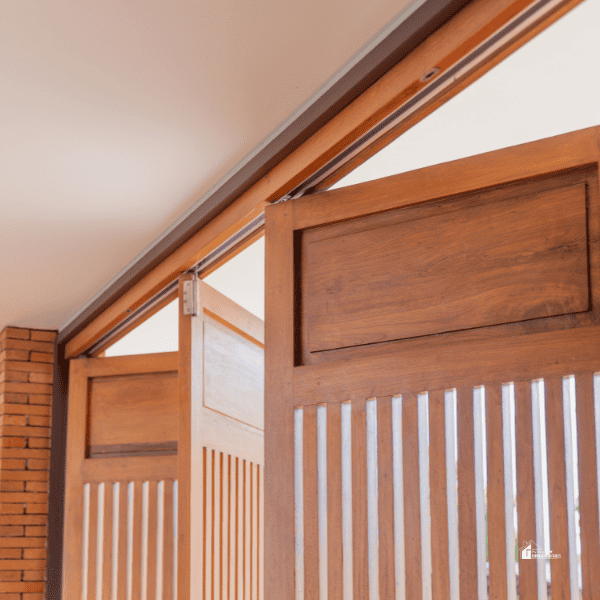Common Remodeling Mistakes to Avoid in Your Home
This post may contain affiliate links which might earn us money. Please read my Disclosure and Privacy policies hereHome remodeling sounds exciting—until you're knee-deep in delays, budget issues, or regrets about the choices you made. While upgrades can increase comfort and add value, things can go off track pretty fast without the right approach.
Many homeowners dive into projects without thinking through the full scope. They pick materials too early, skip permits, or try to take on work that needs a pro. Even smaller remodels can go sideways when planning falls short.
This guide highlights some of the most common remodeling mistakes people make. Whether you're updating one room or working on the entire house, knowing what to avoid can save time, money, and stress.

Ignoring the Details in Basement Projects
Basement renovations are popular, and for good reason. That extra square footage has a lot of potential—it could become a guest suite, home gym, office, or even a second living room. However, when it comes to finishing a basement, skipping the details can lead to problems later on.
Moisture is one of the biggest issues. A damp or humid basement can ruin flooring, damage walls, and create air quality problems. Lighting is another common oversight.
Without the right layout or fixture placement, the space can feel dark and closed in. Proper insulation also matters, since many basements run cooler than the rest of the house.
Some people treat a basement remodel like a regular room makeover. They focus on design without thinking about water protection, ceiling height, or zoning requirements. That approach can lead to trouble—both during the project and after it's done.
Taking time to focus on basement design makes a big difference in how the space turns out. Planning for function, lighting, and layout early on helps avoid changes later. Whether you're turning it into a playroom or an extra bedroom, every detail in the design stage affects how useful and comfortable the space will feel when it’s done.
Skipping the Permit Process
It might be tempting to avoid permits, especially if you’re eager to get started or think the work is minor. But skipping this step can backfire in more ways than one. Permits help confirm that the work being done meets safety standards and follows local building codes.
Without them, a project could lead to failed inspections or worse—being forced to undo the work.
Unpermitted renovations can also cause headaches when you try to sell your home. Buyers may walk away, or you could end up lowering your price to account for missing documentation. Even something as simple as moving a wall or updating electrical wiring often needs approval.
Getting a permit might feel like a hassle upfront, but it’s there to protect you. It helps make sure your project is safe and up to code, which matters long after the dust settles.
Choosing Style Over Function
Everyone wants a beautiful home, but chasing trends without thinking about how a space works can cause frustration later. It's easy to fall for ideas you see online—like open shelving or bold design choices—without asking whether they make sense for your everyday life.
For example, a kitchen with no upper cabinets might look sleek, but where will you keep your dishes? Or a bathroom with a floating vanity might look modern, but does it provide enough storage?
These design choices often come with trade-offs. If you don't think them through, you could end up with a space that looks great but doesn’t support your routine.
Try to balance appearance with usability. Before picking finishes or layouts, think about how you use the room. That way, the end result will not only look good, but also work better for your needs.

Underestimating the Budget
One of the biggest mistakes in remodeling is underestimating the cost. It's easy to get caught up in what you want and forget to factor in what's realistic. Materials, labor, permits, and unexpected repairs can add up quickly.
Even with careful planning, surprises happen. Hidden water damage, outdated wiring, or structural fixes often pop up once the work begins. That’s why building a buffer into your budget is a smart move. Setting aside an extra 10 to 15 percent can give you room to deal with changes without having to stop the project.
Track your spending as you go. Whether you use a spreadsheet or a simple app, keeping an eye on expenses helps you stay in control. Overspending in the early stages can leave you with fewer options when it’s time to finish things up.
Hiring the Wrong Contractors
Picking the right team can make or break a remodeling project. A common mistake is hiring based on the lowest bid. While it’s important to stick to your budget, price shouldn’t be the only factor. A low quote might mean the contractor is cutting corners or doesn’t have much experience.
Take time to research. Read reviews, ask for references, and look at their past work. A good contractor should be licensed, have insurance, and provide a clear contract. That contract should outline the timeline, costs, materials, and responsibilities.
If a contractor avoids giving details or seems hard to reach, those are signs to keep looking. A reliable contractor helps the project run smoother and gives you peace of mind from start to finish.
Rushing the Process
Wanting quick results is understandable, but moving too fast often leads to regret. Rushing can lead to skipped steps, poor choices, and mistakes that take more time and money to fix later.
Before any work begins, take time to plan. Think through your goals, get the right permits, and gather quotes from professionals. Give yourself time to compare options and make decisions based on what works best for your space, not just what’s convenient.
A project that starts with solid planning will likely go more smoothly and bring better results.
Remodeling your home can be a great way to improve your space, but it takes more than vision. Avoiding common mistakes like poor planning, skipping permits, and choosing the wrong help can make a big difference in the outcome.
Start slow, stay organized, and focus on what works best for your lifestyle. Remodeling isn’t just about looks—it’s about creating a space that supports how you live every day. Taking the right steps now leads to better results later.








